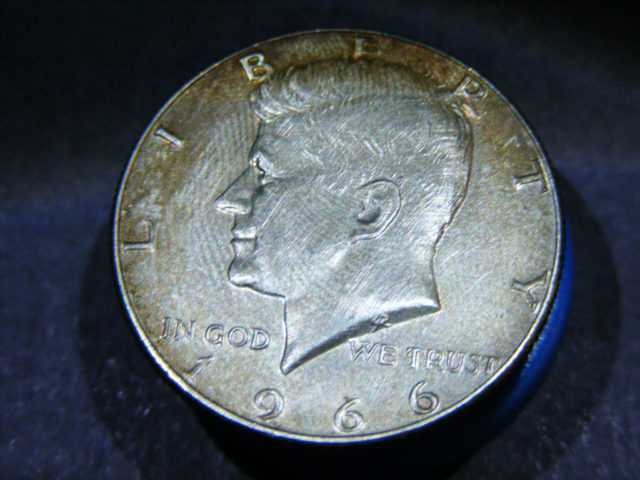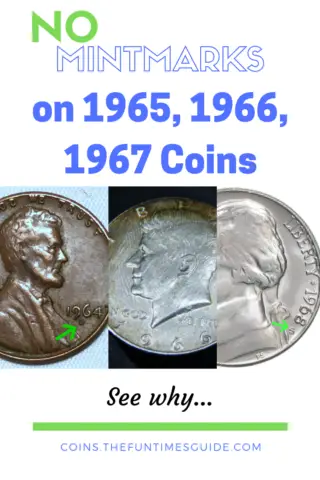A lot of people want to know why they can’t seem to find any coins from 1965, 1966, or 1967 with a mint mark.
Are they rare?
Here’s an example of a 1966 Kennedy half-dollar with no mintmark:
In fact, the United States Mint did not officially produce any coins with a mintmark during the years 1965, 1966, 1967.
Why not?
Well, collectors may not like the answer very much…
Why Mintmarks Were Removed From 1965-1967
Mint marks were removed because too much coin collecting caused a nationwide coin shortage!
During the early 1960s, the coin collecting craze was in full swing. People left and right were collecting coins.
Many were trying to build complete date sets. Others were pulling silver coins out of circulation to benefit from the rising silver bullion values of the time.
In the end, though, what resulted was a nationwide coin shortage. This resulted in the U.S. Mint trying to discourage coin collectors from saving coins based on mint marks by not putting any mint marks on coins at all!
This effort can be seen on the coins without mint marks dated 1965, 1966, and 1967. The Coin Act of 1965 required the removal of mint marks, and this was to be the case for 5 years.
Silver Was Also Eliminated From Coins In 1965
On another note, the U.S. Mint responded to rising silver prices.
In 1965, the U.S. Mint:
- Eliminated silver completely from the dime and quarter.
- Reduced the half-dollar’s composition from 90% to only 40%.
In 1971, the U.S. Mint eliminated silver from circulating coins completely. (The half-dollar was converted to a copper-nickel clad composition.)
Mint Sets & Proof Sets Were Not Produced 1965-1967
Another move made by the U.S. Mint in 1965 was to temporarily stop producing traditional mint sets and proof sets.
During the years 1965, 1966, and 1967, the U.S. Mint offered “Special Mint Sets” — which contained one specimen of each coin:
- the cent
- nickel
- dime
- quarter
- half-dollar
These coins were struck with a “proof-like” finish.
In other words, special mint set coins have a decidedly higher-quality appearance than typical uncirculated strikes, but not nearly as brilliant (in most cases) as an average proof coin.
Mint Marks, Mint Sets, And Proof Sets Returned In 1968
In 1968, Congress acted to restore mint marks on coins.
From this point on, all mint marks were to be located on the obverse (heads side) of the coin. Most coins minted before 1968 have mint marks located on the reverse. Lincoln pennies were an exception. Lincoln pennies did bear mint marks on the obverse before 1968.
In 1968, the United States Mint also resumed production of regular proof sets and mint sets.
Clearly, the U.S. Mint’s efforts to reduce the number of coins being pulled from circulation did not result in collectors forever shying away from date-and-mint-mark series collections. People to this day continue to pull millions of coins out of circulation based on mint mark.
This was particularly evident during the striking of the 50 State Quarters program. People were constantly on the lookout for coins with mint marks from the opposite region of the nation. People in the eastern half of the U.S. vied for Denver-minted coins, and people in the west were on the lookout for Philadelphia issues.
Like this post? Save it to read again later… or share with others on Pinterest!






